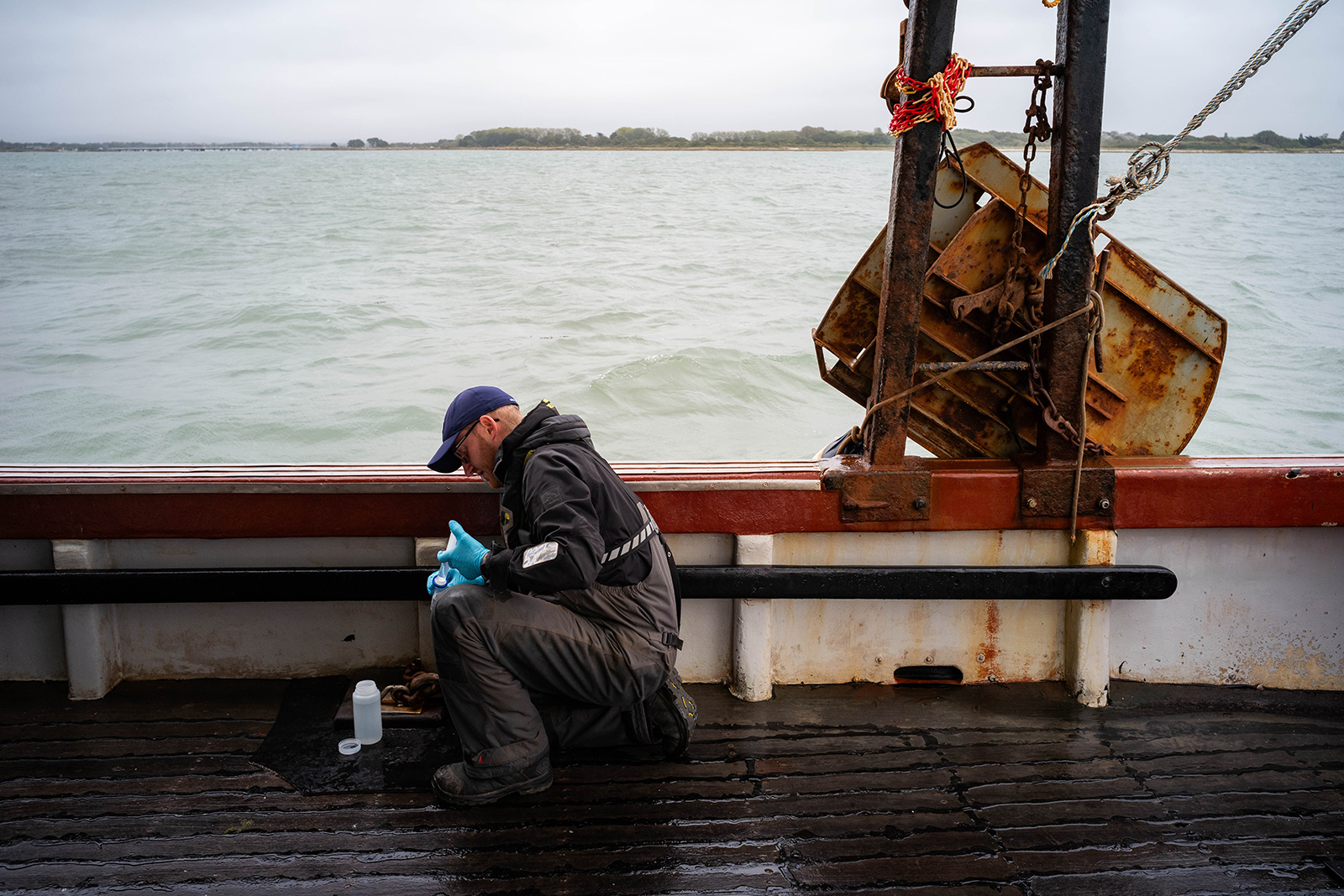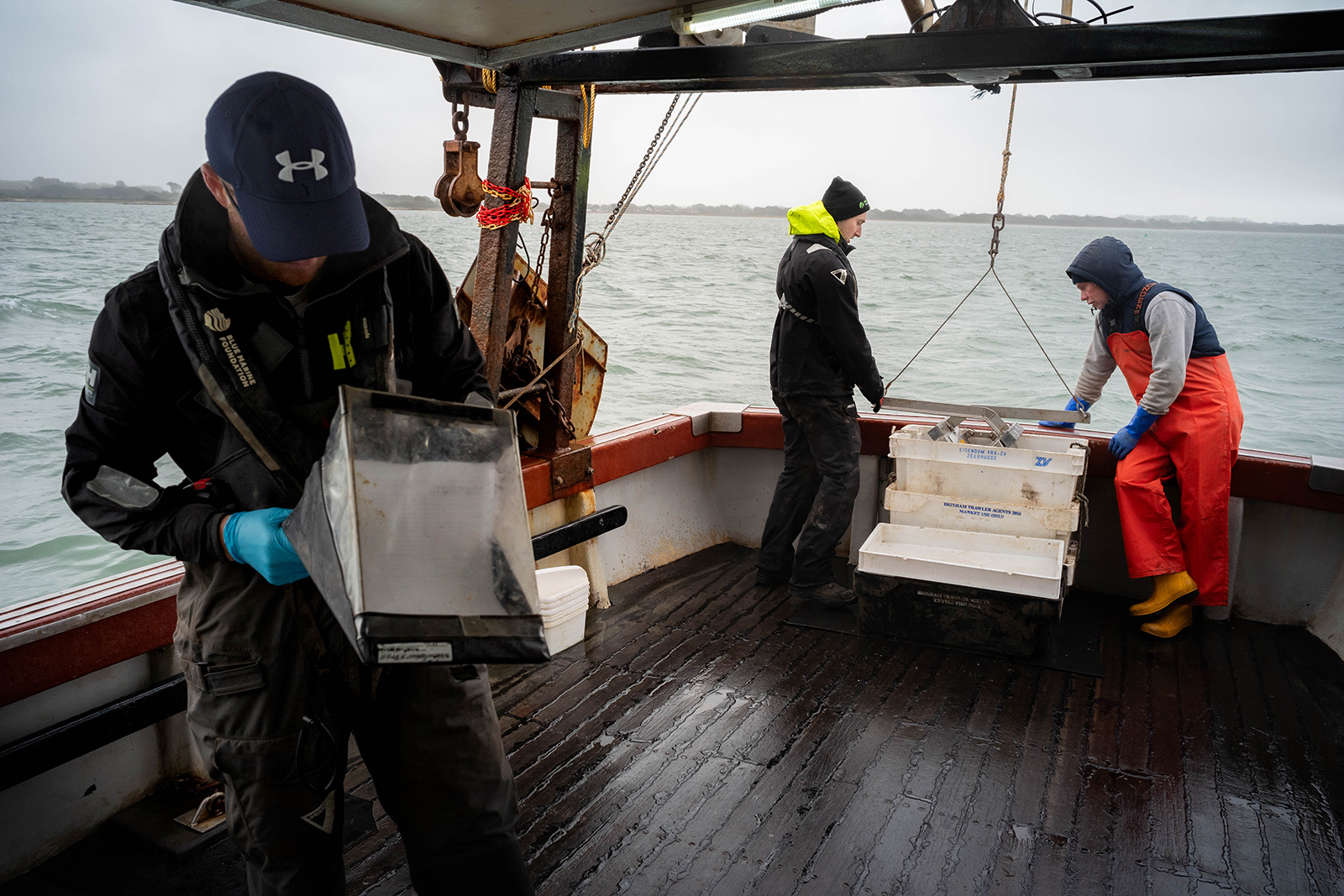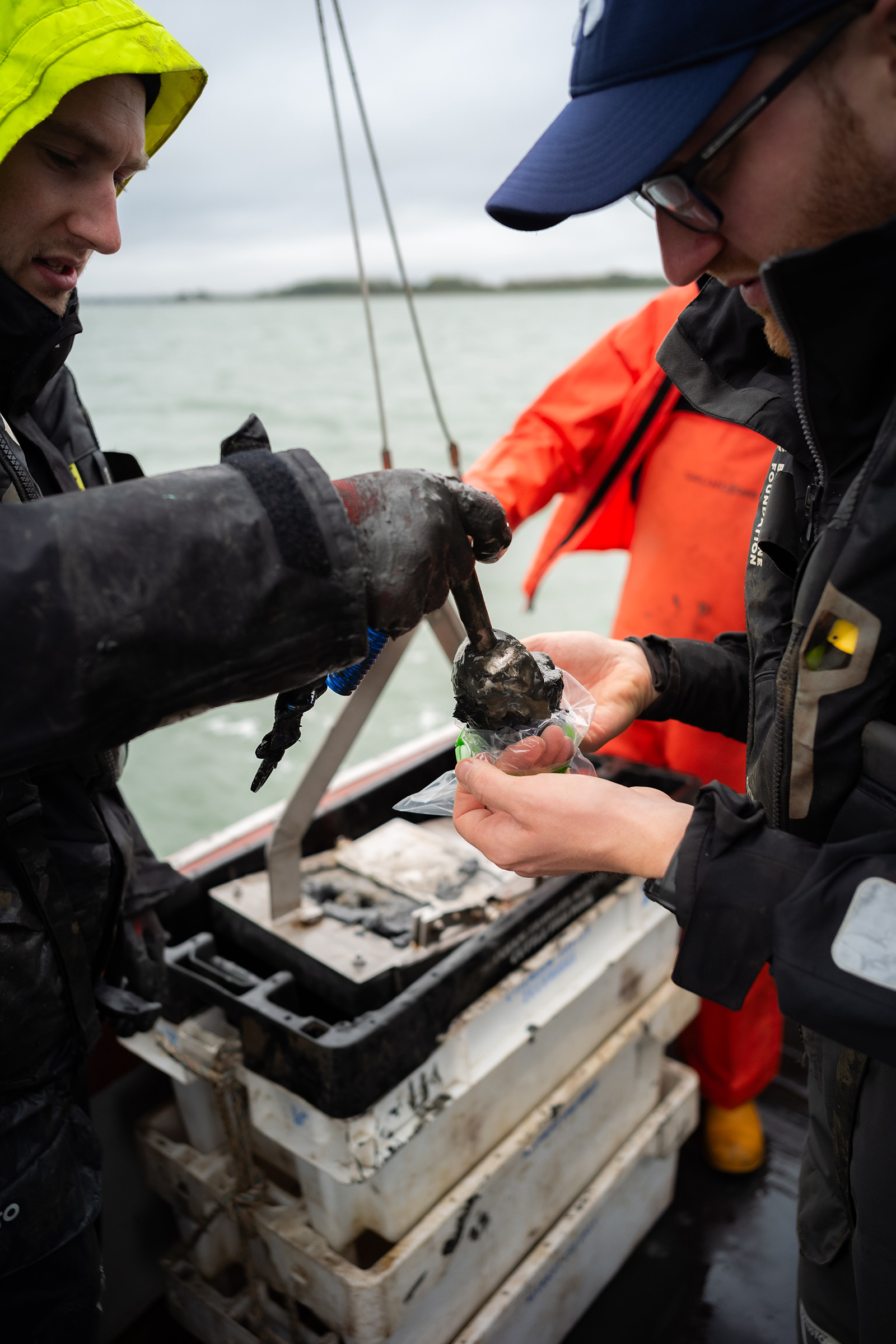Antac Support Services supported the restoration of approx. 150 sq m of native oysters in the Solent in 2024-25
Antac Support Services has committed to advancing native oyster restoration initiatives in the Solent, a strait between the Isle of Wight from mainland England, through a collaboration with GreenTheUK and in support of the critical marine conservation efforts led by the Blue Marine Foundation.
The native oyster is listed as a priority species under the UK Biodiversity Action Plan, and its ecological restoration has been recognised as a vital conservation on national, European, and global scale. It is estimated that approximately 85% of historic oyster reefs and benthic habitats have been eradicated globally, rendering them one of the most critically endangered marine ecosystems.
Functioning as ecosystem engineers, native oysters deliver a multitude of ecological services, including:
- Enhanced water filtration: A single oyster can process up to 200 litres of seawater daily, thereby improving water clarity and nutrient balance.
- Provision of complex habitat: Oyster reefs serve as biodiversity hotspots, offering shelter and breeding grounds for many marine organisms including fish, crustaceans, and invertebrates.
- Shoreline stabilisation: The physical structure of oyster beds contributes to natural coastal defence mechanisms by mitigating erosion.
- Cultural and historical value: Once a prolific and economically significant food source, evidenced by archaeological findings dating back to Roman Britain, native oyster populations have dramatically declined in the Solent.
In support of these goals, Antac Support Services is contributing to the restoration of approx 150 sq m of oyster reef habitats within carefully protected areas of the Solent. Working alongside the University of Portsmouth, the project involves placing mature oysters onto newly created reef structures to help encourage natural recolonisation.
Project Overview
The Solent Seascape Project (Seascape Project) is the first initiative in the UK that is approaching ecosystem restoration at a seascape scale. It aims to use a nature-based solution (NBS) to improve the protection, restoration, and connectivity between key marine and coastal habitats.
The Solent Oyster Restoration Project runs as a part of this wider Seascape Project and has had a productive year as it continues its effort to restore native oyster populations to this vital area of UK coastline. In the past year, the Blue Marine team has focused primarily on monitoring, area surveillance and maintenance. This tracking has been to assess progress following our successful 5000-strong native oyster deployment in April 2024.
Antac Support Services' funding is essential to this project, providing us with the necessary capacity and resources to continue our oyster restoration efforts on this vital stretch of Solent coastline.
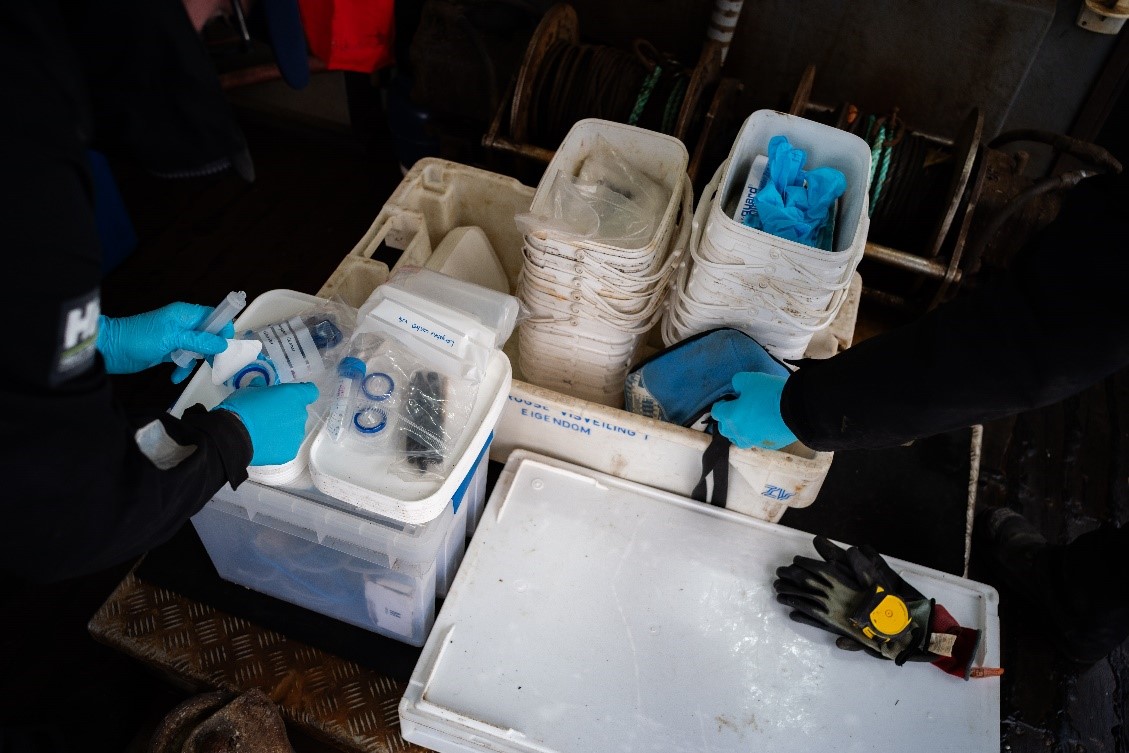 1. Sampling kit aboard the fishing vessel used to monitor the oyster reef and control sites. Including eDNA, sediment samples, water samples and benthic community assemblage assessments. Credit: Will Jones-Warner.
1. Sampling kit aboard the fishing vessel used to monitor the oyster reef and control sites. Including eDNA, sediment samples, water samples and benthic community assemblage assessments. Credit: Will Jones-Warner.
Key Updates
Oyster Reef Development
Chichester Harbour has been identified as a suitable area for future reef development to support oyster restoration. To ascertain this, we conducted bathymetric and sediment type analysis over 15 hectares, finding that within this, 3.84 Ha are the correct substrata (subtidal/sublittoral mixed sediment) and depth for works to take place within biological, logistical, and environmental factors. The sediment type was confirmed with benthic grab samples conducted in the 3.84ha area. This will enable the Seascape Project to reach its 4ha target of oyster reef restored.
We are currently preparing a marine licence application to undertake the works in an iterative manner attempting to restore 1 to 1.25ha at a time over several years. Once approved by the Chichester Harbour Conservancy we will submit the application to the Marine Management Organisation.
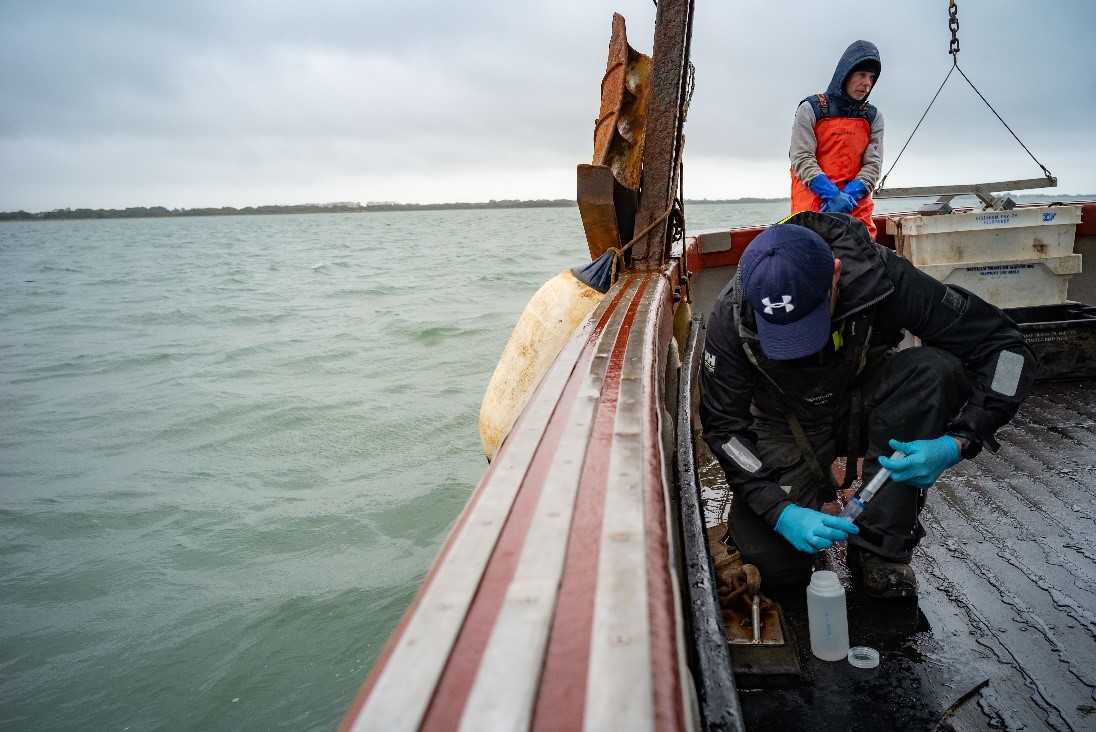 2. Dr Luke Helmer collecting water samples to assess water quality over the reef and control areas to assess the impact native oysters are having over time. Credit: Will Jones-Warner.
2. Dr Luke Helmer collecting water samples to assess water quality over the reef and control areas to assess the impact native oysters are having over time. Credit: Will Jones-Warner.
Oyster Cage Monitoring and Maintenance
Through August, September and October, Blue Marine ran five oyster nurseries monitoring and maintenance sessions. This monitoring was to assess how the adult broodstock oysters are doing in the nursery systems under the marina pontoons near the reef sites. These populations are in place to act as ‘larval pumps,’ releasing larvae into the system which will hopefully recruit onto the seabed sites. The nurseries also require regular maintenance and cleaning to ensure the oysters get a good flow of water to continue feeding well.
We have also been involved in monitoring operations to assess oyster habitat and oyster density through a drop-down camera survey, bathymetry surveillance and grab sampling. The grab sampling has provided an interesting insight into biodiversity increase within a relatively brief period. Monitoring oyster density is proving challenging due to poor visibility and the oysters doing what we want them to do - attracting more life, but this obscures the oysters from view. We are looking into diver surveys to combat this issue.
Oyster Coupelles and Environmental Monitoring
Oyster coupelles or ‘spat collectors’ - structures that sit on the seabed to act as a proxy for larval recruitment on the reef areas by providing settlement substrate for oyster larvae - were deployed in the River Hamble, Langstone Harbour and Chichester Harbour at reef and control sites in May 2024 to assess oyster recruitment. Coupelles were retrieved six months later where they were then assessed with colleagues at the University of Portsmouth to determine the larval settlement of all molluscs in the areas. However, due to rope entanglement and design issues, the data collected that year may not be fully reflective of the true recruitment potential of the areas. The design of the system has been modified to prevent these issues for 2025, and deployment will occur in May, with the systems retrieved six months later.
Findings
We are in the initial stages of monitoring, and it will take years to fully understand the true biodiversity impact. However, our two sites - Langstone Harbour and the River Hamble - are both already demonstrating biodiversity uplift, and a shift away from invasive to native species. We have garnered these findings from grab sampling of the seabed, eDNA (environmental DNA) and BRUV (baited remote underwater video). Importantly, the spat collector data shows that the reefs and nurseries are actively reproducing, and that recruitment is taking place (spat seen on cultch) – with more native oyster spat found on our reef than at the control sites in 2023.
The material deposited in the River Hamble has also remained in place over two years, as seen through bathymetry and residual plots.
 3. Number of larvae of mollusc species observed on the coupelle 'spat collectors' in Langstone Harbour. Important points to note – i) increased native oyster settlement at the reef site in comparison to control site ii) settlement of the invasive and pest species Crepidula fornicata (American slipper limpet).
3. Number of larvae of mollusc species observed on the coupelle 'spat collectors' in Langstone Harbour. Important points to note – i) increased native oyster settlement at the reef site in comparison to control site ii) settlement of the invasive and pest species Crepidula fornicata (American slipper limpet).
 4. Number of larvae of mollusc species observed on the coupelle 'spat collectors' in the River Hamble. Important points to note – i) increased native oyster settlement at the reef site in comparison to control site ii) increased settlement of other native species settlement at the reef site in comparison to control site iii) settlement of the invasive and pest species Crepidula fornicata (American slipper limpet) at both sites but greater at the reef site – a population was present in the area so this is not unexpected.
4. Number of larvae of mollusc species observed on the coupelle 'spat collectors' in the River Hamble. Important points to note – i) increased native oyster settlement at the reef site in comparison to control site ii) increased settlement of other native species settlement at the reef site in comparison to control site iii) settlement of the invasive and pest species Crepidula fornicata (American slipper limpet) at both sites but greater at the reef site – a population was present in the area so this is not unexpected.
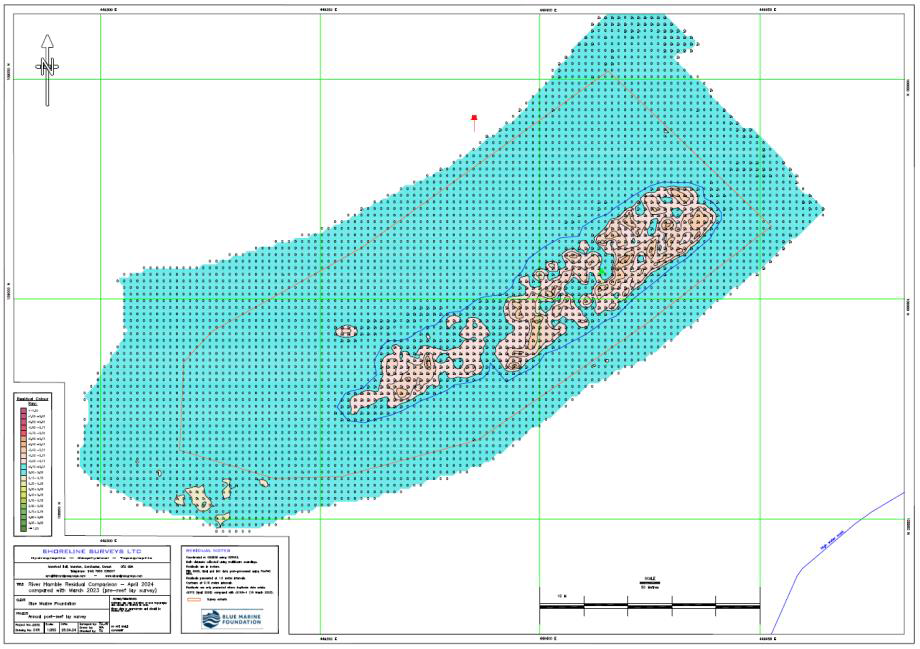
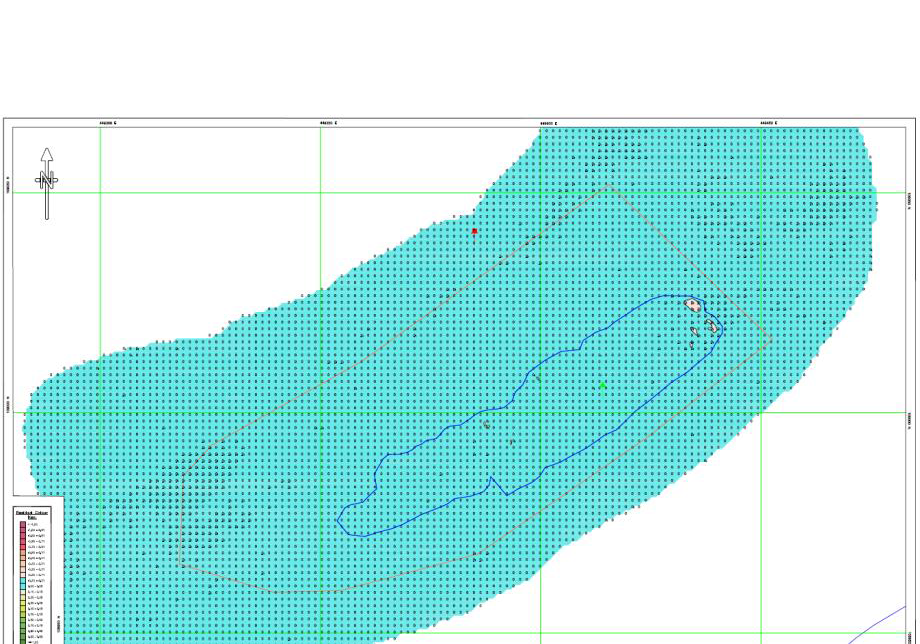
Media and Communications
Several scientific papers focused on the oyster restoration project, bolstering awareness of our work to wider academic audiences have been written and shared. Additionally, the scientific paper by zu Ermgassen et al. (2025) that was published in Conservation Letters has been highly influential, playing a key role in securing Red List endangered status for the native oyster- a crucial step in strengthening its protection and conservation efforts.
- zu Ermgassen, P. S., McCormick, H., Debney, A., Fariñas‐Franco, J. M., Gamble, C., Gillies, C., ... & Thurstan, R. H. (2025). European native oyster reef ecosystems are universally collapsed. Conservation Letters, 18(1), e13068. https://doi.org/10.1111/conl.13068
- Fabra, M., Morrall, Z., Helmer, L. et al. Filtration Behaviour of Ostrea edulis: Diurnal Rhythmicity Influenced by Light Cycles, Body Size and Water Temperature. Estuaries and Coasts 48, 18 (2025). https://doi.org/10.1007/s12237-024-01453-5
- Thurstan, R. H., McCormick, H., Preston, J. et al. Historical dataset details the distribution, extent and form of lost Ostrea edulis reef ecosystems. Sci Data 11, 1198 (2024). https://doi.org/10.1038/s41597-024-04048-8
- Thurstan, R. H., McCormick, H., Preston, J., .… zu Ermgassen, P.S.E. (2024) The world was our oyster: Records reveal the vast historical extent of European oyster reef ecosystems. Nature Sustainability. DOI: 10.1038/s41893-024-01441-4.
- ABPmer (2025). Solent State of Nature Report, Volume 1 – Main report, ABPmer Report No.R.4618 Vol. 1 of 2. A report produced by ABPmer for Solent Seascape Project, February 2025 DOI: https://solentseascape.com/wp-content/uploads/2025/01/Solent-State-of-Nature-Report_Main-Technical-Report_Volume-1_ABPmer-R4618a_v3_28Feb2025.pdf
- Fabra M., van der Schatte Oliver, A., Morrall, Z., Watson, G., Woods, F., and Preston, J. (2024) Nutrient cycling processes in remnant UK oyster habitat: Filtration rates, nutrient assimilation and deposition by Ostrea edulis, and denitrification rates mediated by remnant mixed oyster habitat. Report to The Environment Agency, England. Call off ref: RDE305, Version 0.2, Sept 2024. DOI: https://nora.nerc.ac.uk/id/eprint/538761/1/N538761CR.pdf
In April 2025, several team members attended The Native Oyster Network UK & Ireland conference, where the importance of this work was strongly reaffirmed. Many participating organisations referenced the seascape restoration efforts, drawing inspiration from Blue Marine Foundation’s approaches to reef building and nursery design.
You can learn more about what it takes to restore an oyster reef in our new short film, which currently has over 5000 views across YouTube and Instagram.
Issues Encountered
Whilst the past six months have seen some incredible work and monitoring taking place, there has also encountered a few external obstacles which have provided some setbacks to our timelines.
Grab Sampling
The nature of grab sampling licensing requires permission from the landowner prior to sampling. Blue Marine required Site of Special Scientific Interest (SSSI) consent from Natural England, which is granted to the landowner rather than the person or organisation undertaking the works. This also changed in June 2024 and ‘assent’ is required from competent authorities if they are the landowner (including the Crown Estate) which has caused issues with gaining permissions.
To confirm if the substratum is indeed sublittoral mixed sediment, Blue Marine required a Site of Special Scientific Interest (SSSI) consent from Natural England to be able to undertake grab sampling. However, this permission is granted to the landowner rather than the person/organisation undertaking the works. Despite initiating contact at the beginning of 2024, it was only in October that we were able to meet with the landowner and receive this written consent to apply for the SSSI. The sampling has now taken place, but these delays mean that works to deploy material in Chichester are unlikely to take place before the 2025 oyster spawning season (Spring 2025). However, despite these timeline setbacks we remain confident that our restoration aims for Chichester Harbour can be achieved within the project lifetime.
Oyster Supply
Fielding a supply of native oysters is always an issue with current demand in the UK, with quantities difficult to predict prior to spawning season. To alleviate these uncertainties Blue Marine is working with ZSL and the University of Portsmouth to assess the challenges and barriers to native oyster hatchery production and develop a strategy for expanding native oyster production to meet restoration needs.
Future Objectives
We are now also preparing for our upcoming deployment in May 2025, during which we will introduce an additional 10,000 oysters, followed by a second deployment later in the year to help ensure optimal density across the site.
Thank You
Thank you Antac Support Services for supporting native oyster restoration and the work to enhance marine biodiversity. On behalf of everyone at Blue Marine Foundation, the Oyster Restoration Team and GreenTheUK we would like to extend our thanks to Antac Support Services for your generous commitment and taking action to protect our seas.

UN's Sustainable Development Goals
As a GreenTheUK partner, you support projects that are in line with the UN Sustainable Development Goals.

Take urgent action to combat climate change and its impacts.

Conserve and sustainably use the oceans, seas and marine resources for sustainable development.



















